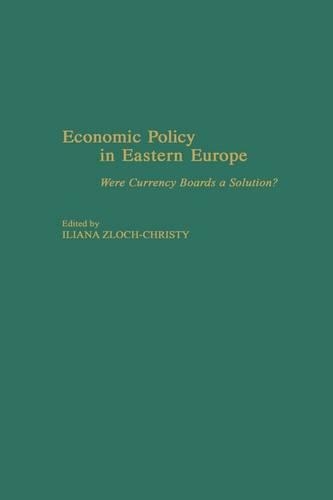
Economic Policy in Eastern Europe: Were Currency Boards a Solution
(Hardback)
Publishing Details
Economic Policy in Eastern Europe: Were Currency Boards a Solution
By (Author) Iliana Zloch-Christy
Bloomsbury Publishing PLC
Praeger Publishers Inc
30th August 2000
United States
Classifications
Tertiary Education
Non Fiction
Development economics and emerging economies
Political economy
Macroeconomics
338.947
Physical Properties
Hardback
184
Description
In 1989 the post-Communist countries of Eastern Europe opened their economies by establishing more open exchange rate policies and exchange controls and eliminating prohibitive tariffs and quotas. Now trying to join the integrated world economy, they are facing the challenge of finding strategic alliances and attracting foreign capital. This book analyzes economic policy in Eastern Europe with a focus on the financial arrangements of currency boards. It examines the main challenges facing East European countries, their economic policy strategies, the main challenges to the economies that adopted currency boards, and whether currency boards were a solution. The book is organized into two parts. Part 1 addresses the challenges to economic policy in Eastern Europe, and part 2 turns to the discussion of currency boards.
Author Bio
ILIANA ZLOCH-CHRISTY has been a faculty associate at Harvard University and St. Antony's College, Oxford. She is currently with the University of Vienna. Her earlier books include Eastern Europe in a Time of Change (Praeger, 1994) and Privatization and Foreign Investments in Eastern Europe (Praeger, 1995).
